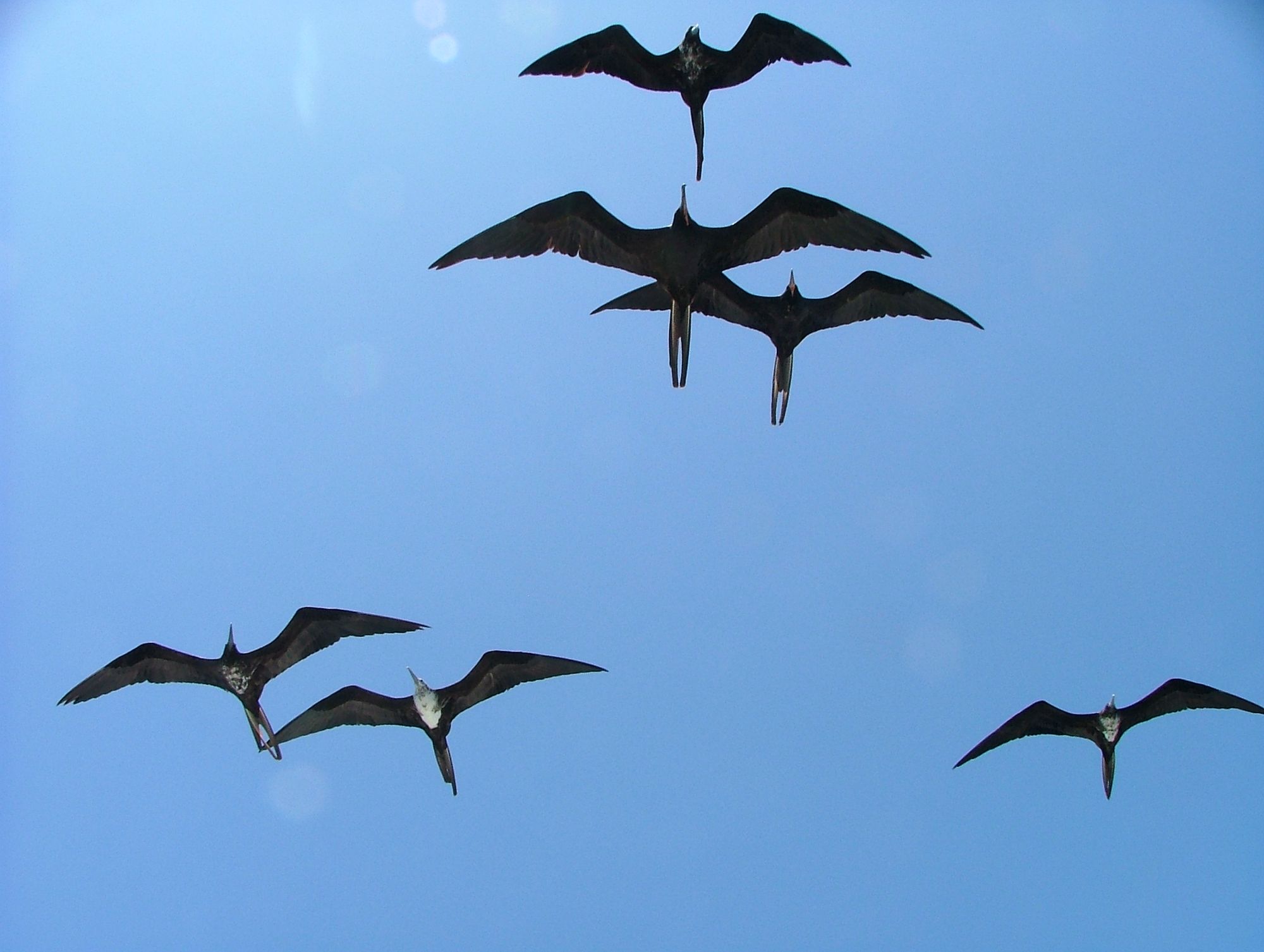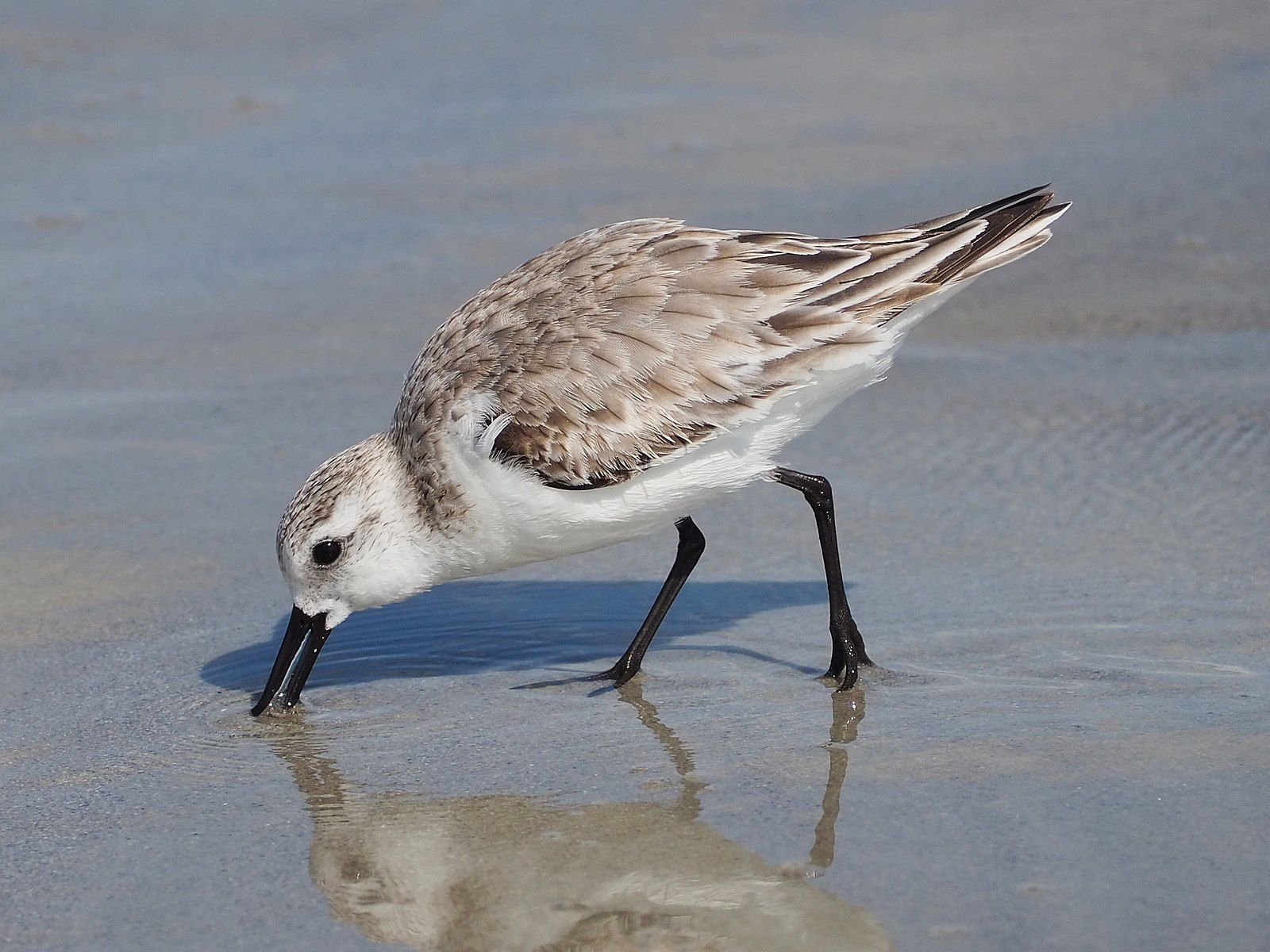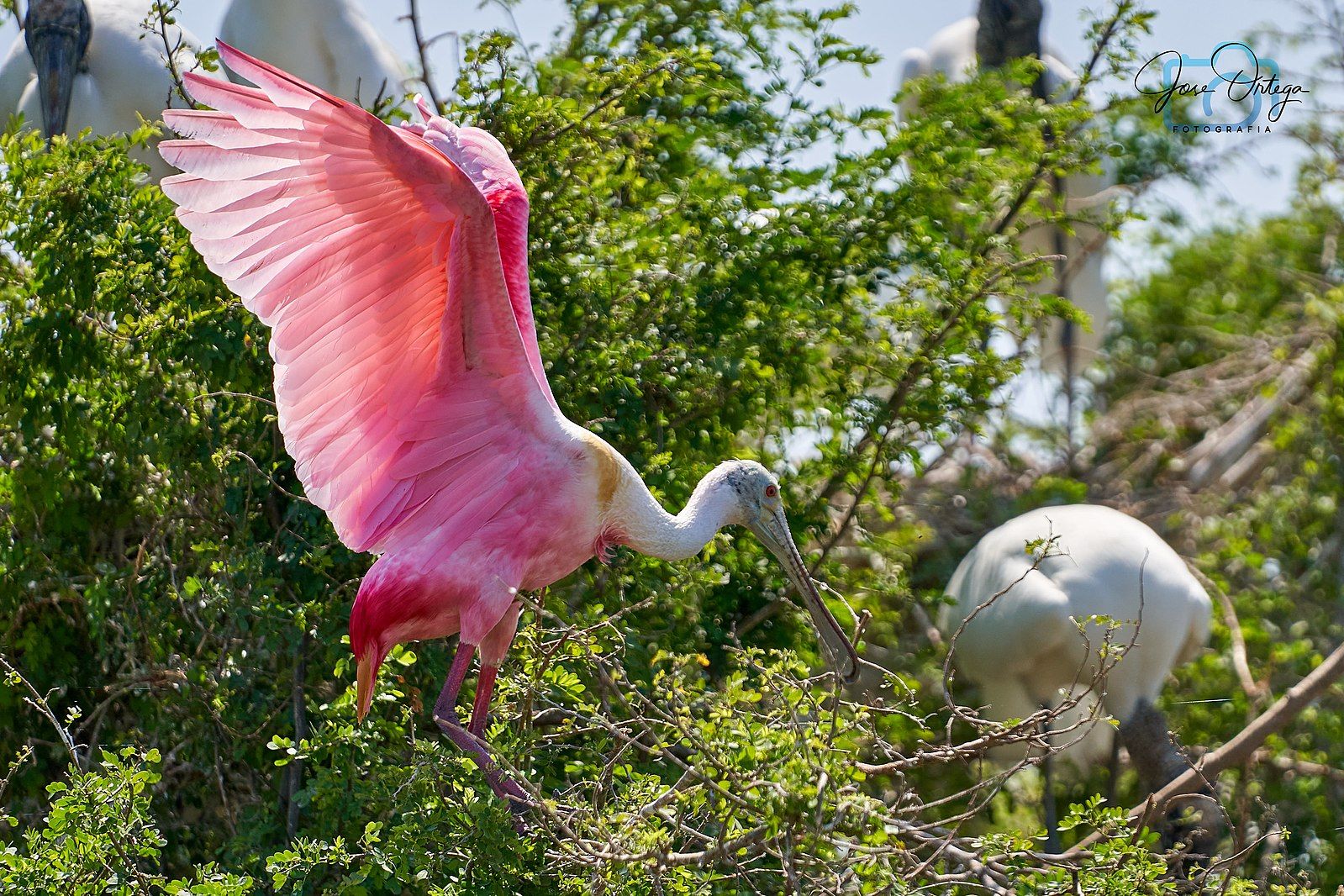
At the end of my last post, I promised that we would finally start covering hurricanes as it relates to animal behavior. Well, the time has come. We’ve eaten our greens and now we get to savor some meat.
This time, we’ll be looking at some of our winged friends. Birds are probably one of the most mobile groups of animals, the complete opposite of the plants we’ve been talking about so far. They don’t, necessarily, have to ‘sit around and take it.’ So how do they cope? Like before, we’ll look at some examples, working our way inland as we go.
Out at Sea
All birds do require land for certain necessities, in particular breeding and raising offspring, but there are a subset that spend large portions of their lives flying over water. These include such groups as the albatrosses and petrels. We don’t have any of the former native to Florida, but we do have one petrel and three species of storm petrel (the two names belong to two closely-related but distinct taxonomic Families). These birds are mainly pelagic, over open sea, and rarely seen by observers on land.
Another Florida bird with some similar flight habits is the magnificent frigatebird, Fregata magnificens. Frigatebirds are incredibly lightweight and can soar for days at a time. While it is most famous for the brilliant red cheek pouch possessed by the males and used in courtship, you are much more likely to see one in flight. Their outline is unique and recognizable with sharp points at the wingtips as shown by the photo below.

Frigatebirds have one of the more fascinating feeding strategies. Their diet is typical for a seabird: mainly fish with some marine invertebrates, but they have a unique way of stealing food from other birds. The concept itself isn’t unheard of, our national bird the bald eagle is well known for such behavior, but frigatebirds go about it in a curious fashion. They will tap on another bird’s bill. Seabirds and shorebirds have developed an instinctual regurgitation reflex to such an action (usually in response to a tap from its own chicks) and so will vomit up its meal for the frigatebird to pilfer.
How do these birds deal with a hurricane? It varies for each species, but the dangers are essentially the same for all: high winds and rain. Soaring birds in particular rely on stable wind conditions to remain aloft. The high winds of a tropical cyclone are not conducive to that and can even interfere with the aerodynamics of the wings. Humans may sometimes send planes into such a storm for data collection, but it’s a high risk endeavor, not something any bird would try. Their options for dealing with the wind are to either land or try and outrun the storm.
Landing isn’t always feasible for some species. Frigatebirds, for example, do not usually land on the water because they lack high levels of oil in their preen gland (what birds like ducks use to waterproof their feathers). Therefore, if they did land on water their feathers would get soaked and they would not be able to take off again. A frigatebird would need to get to a roost on land in order to employ such a strategy. Even for other birds, high waves and rain make weathering a storm on the water a difficult task, so these birds will usually fly away from the storm. For particularly large and long-lasting storms, a bird can be displaced far from its normal range.
Heavy rain can be dangerous for birds on the wing. Like other air-breathing vertebrates, their primary method of inhalation is through the nostrils. However, compare the placement of their nostrils to our own. The cartilage of the human nose has created a slanted structure with the openings on the underside. In contrast, birds tend to have upward facing nostrils, open to the sky and falling rain. If the rain is heavy enough, a bird can theoretically drown from water inhalation. This is why you see many birds tuck their heads under their wing when it rains: to protect their nostrils. Of course, a flying bird doesn’t have that option. Because of this vulnerability in particular, these birds will absent themselves from the area of a hurricane if they sense it coming.
On the Shore
In addition to the problems of wind and rain mentioned above for pelagic seabirds, shorebirds also face the threat of storm surge from hurricanes. We have a large variety of shorebirds here in Florida, including at least 6 plovers, almost 30 sandpipers, and numerous gulls, terns, and similar birds that forage and often nest on beaches or sand dunes.
One of the more common shorebirds seen in Florida is the sanderling, Calidris alba, a small sandpiper with a worldwide distribution. It can often be seen in groups in the surf zone probing the sand for invertebrates to eat.

Sanderlings are arctic breeders, so they don’t have to worry about hurricanes disrupting their nesting grounds, but that’s not true for all shorebirds. In Florida, several species of plovers, terns, and others all nest on our beaches. If a hurricane occurs during nesting season, there isn’t anything the birds can do to save their eggs or chicks, but the adults themselves don’t have much trouble. Ten foot plus storm surge like that seen in Ian could wipe out a small bird, but by the time it’s an issue, the shorebirds are long gone.
Where do they go? It depends on what’s nearby, but they tend to find some form of protected area inland. For example, in my neck of the woods, approximately two days before Ian reached shore, huge flocks of sandpipers, terns, and other shorebirds showed up at Corkscrew Swamp Sanctuary. Of course, that prompts the question, ‘how did they know to leave?’. We don’t know for certain, but many animals have heightened senses of one form or another. It is possible that these birds are able to sense subtle shifts in barometric pressure as large storms approach and are thus able to respond before they arrive.
On occasion, when I mention the heightened senses of some animals compared to those of humans, I hear a joke about how it would be nice to have that ability. In this particular case, however, it’s probably better that we don’t. As someone with a slight sensitivity to pressure changes and who has friends with even greater sensitivity than that, the secondary effects of such a ‘super-sense’ can be highly unpleasant. Keep in mind, if we can’t sense or detect something, it’s likely because we don’t need to. It’s not of any evolutionary benefit.
So, if shorebirds can sense a hurricane coming, that means they get off easy, right? Unfortunately, not quite. Rather than the storm itself, shorebirds are much more vulnerable to the aftermath. Erosion caused by storm surge can alter their beach habitat greatly, with the potential to adversely affect their foraging or breeding capabilities.
Higher and Drier
What about birds that are already more inland? They don’t have to worry about storm surge and they are unlikely to be caught flying in a hurricane. They can tuck themselves away out of the rain and perch somewhere high enough off the ground that floodwaters won’t reach them.
However, like shorebirds, hurricanes can be highly disruptive to their habitat. Rookery islands where they nest can suffer damage, forcing them to relocate. I have seen anecdotal evidence of this after both Irma and Ian. Shortly after the former, a rookery and roosting spot I am familiar with received a large influx of black-crowned night herons, Nycticorax nycticorax, that had not previously been there (this was evident because they were usually leaving at dusk when the other birds were returning). The herons used it for a single nesting season and then moved on. I suspect that they had been displaced by damage to their original roosting location. For reference, a ‘roost’ is a location where birds rest and sleep. A ‘rookery’ is an area that serves as a breeding colony.
After Ian, something similar has happened at that same rookery, this time with several roseate spoonbills, Platalea ajaja.

The effects of saltwater inundation on freshwater plants can also change these birds’ foraging patterns. Littoral plants provide important habitat for small fish, a major prey item for many of Florida’s wading birds. These birds can adapt, but it’s an additional challenge that they have to deal with.
Conclusions
Most birds can fly, and this increased mobility gives them an extra advantage when dealing with hurricanes that many other organisms don’t possess: they can get out of the way. Direct mortality from major storms is usually low, but the ‘knock-on’ effects of changes to habitat are more difficult to track.
Much like with the plants we covered earlier, hurricanes are major events that happen periodically, so most species of birds are capable of handling the disruption. However, those that already have vulnerable or diminished populations are at higher risk from such a disturbance.
Next time on ‘Winds of Change’, we’ll move out of the air on focus on the underground landscape. Burrowing animals face increased challenges from hurricanes and we’ll look at how they handle it.